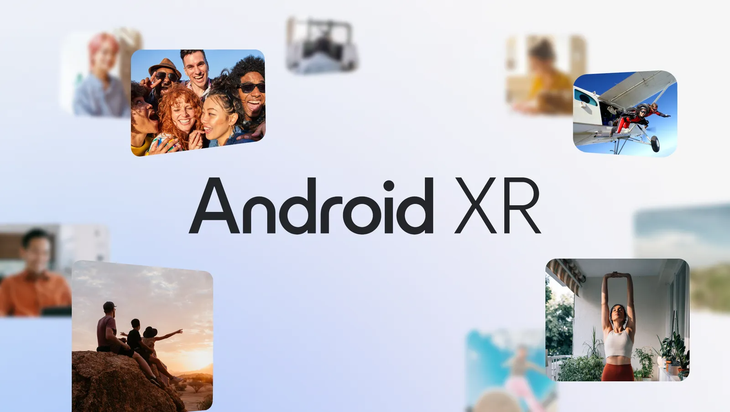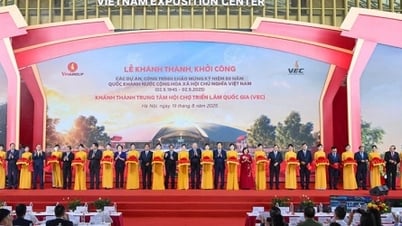
Google introduces the all-new Android XR operating system for wearable devices supporting AR and VR technology - Photo: Google
After years of silence in the augmented reality race, Google is making a strong comeback with Android XR, an operating system separate from traditional Android, designed specifically for wearable devices that support AR and VR technology.
Although it hasn’t been officially launched yet, what Google announced at its recent I/O conference has opened up a new perspective on the future of digital interactions. This article will help you understand what Android XR is, how it differs from current Android, and why ordinary users should care.
Android XR and the Return of Google
Video simulation using Google Photos with Android XR augmented reality glasses. - Video: Google
When it comes to virtual reality or augmented reality, many people still think it is a distant technology, only for gamers or professionals. But now, Apple, Meta and Google are all investing heavily in this field.
Android XR is Google's new move, marking its return to the 3D space technology race after many years of silence.
XR stands for extended reality, which includes VR, AR, and a combination of both. To work smoothly on smart glasses or wearables, the operating system needs to be specifically designed, not just the phone platform.
After failures like Google Glass or Daydream, Google now chooses a completely new approach: creating a separate operating system for space devices.
Android XR is built to optimize the three-dimensional experience: battery life, latency reduction, sensor processing, and gesture interaction support. This makes wearables more stable, responsive, and user-friendly.
Instead of targeting a small number of tech enthusiasts, Google wants Android XR to become the universal platform for learning, working, and entertainment in the near future.
Video simulating using Google TV with Android XR augmented reality glasses. - Video: Google
According to Tuoi Tre Online , in December 2024, Google confirmed that it was collaborating with Samsung to develop a completely new wearable device using Android XR. This is a mixed reality headset, which can display both virtual space and information in the real world . Although the product has not been revealed, Google said that they are seriously investing to create a commercial device, no longer an experiment like previous projects.
The first device is expected to launch in late 2025 and will be powered by the Qualcomm XR2 Gen 2 chip, a specialized processor line for virtual and augmented reality glasses. This is a platform that many major companies are choosing because of its ability to process 3D images, support motion tracking and optimize energy for wearable devices.
With the combination of powerful hardware and a dedicated operating system, Google is expected to create a product that directly competes with Apple Vision Pro in the first generation.
What's "strange" about Android XR?
Video simulating navigation feature with Android XR. - Video: Google
While XR technology has previously been associated with games or digital displays, Android XR is expanding its applications to everyday situations such as work, study, and entertainment. This change brings the technology closer to ordinary users.
Wearing Android XR-enabled glasses, users can join virtual meetings with lifelike images, open multiple documents at once on the virtual screen in front of them, or tour a landmark in 3D space without leaving home.
Notably, Android XR doesn’t force users to learn from scratch. The platform maintains compatibility with existing Android apps, while adding support for gesture, voice, and motion tracking interactions. This makes the experience more natural, without being constrained by a keyboard or mouse.
Google is also developing its own app store for 3D environments, making it more accessible to users without complex technical knowledge.
Competition in the space equipment market
Google’s launch of Android XR shows that it doesn’t want to be left out of the growing augmented reality game. Big competitors like Apple have launched Vision Pro, Meta has its Quest headset, and Microsoft is still playing the research role with HoloLens. Meanwhile, Google has chosen to focus on the software platform, something it has done so well with Android on phones.
Google's advantage is its ability to build an open ecosystem, allowing many manufacturers and programmers to participate. If Android XR follows the traditional Android model, users will have more device options with flexible prices, not tied to a single company.
But for this technology to truly become mainstream, Google needs to ensure a seamless experience between software and hardware, and make it clear how Android XR is different from previous failures.
Android XR is still in development, but the move shows that Google no longer sees XR as an experiment, but as part of a long-term strategy. If done right, the platform could make holographic technology more accessible to everyone, just as Android made smartphones available to billions of people around the world.
Source: https://tuoitre.vn/google-gioi-thieu-android-xr-nen-tang-danh-rieng-cho-kinh-thuc-te-ao-va-tang-cuong-20250625112729869.htm




























![[Photo] Prime Minister Pham Minh Chinh receives Australian Foreign Minister Penny Wong](https://vphoto.vietnam.vn/thumb/1200x675/vietnam/resource/IMAGE/2025/8/20/f5d413a946444bd2be288d6b700afc33)

![[Photo] Politburo works with Standing Committees of Lang Son and Bac Ninh Provincial Party Committees](https://vphoto.vietnam.vn/thumb/1200x675/vietnam/resource/IMAGE/2025/8/20/0666629afb39421d8e1bd8922a0537e6)









































































Comment (0)